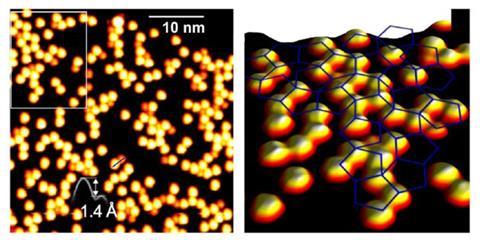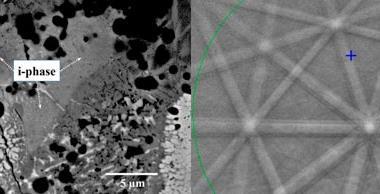
These scanning tunnelling electron microscopy images show buckyballs, or molecules of C60, that have been sputter coated onto the surface of a quasicrystalline alloy of aluminium, copper and iron at very high temperatures. The buckyballs form a lattice of pentagonal ‘Penrose tile’ shapes as they interact with iron atoms in the crystal and adsorb to its surface. Dan Shechtman was awarded the 2011 Nobel prize in chemistry for his discovery of quasicrystals in 1982.
The team, led by Joe Smerdon at the University of Central Lancashire, also created similar two-dimensional quasicrystalline layers out of rod-shaped pentacene molecules on the surface of silver–indium–ytterbium quasicrystals, consistent with those predicted in recent theoretical models. They say this template-based approach to making quasicrystals could potentially be scaled up to produce larger systems.








No comments yet